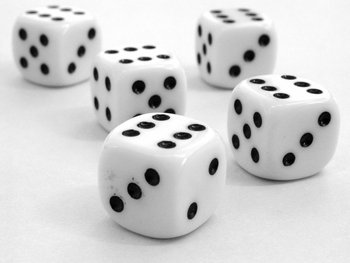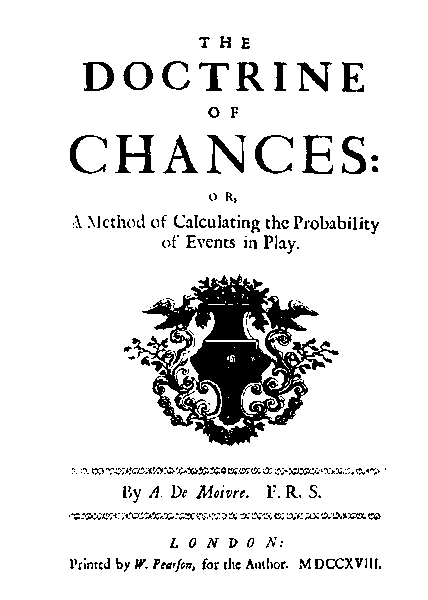A brief history of probability theory
Thanks to probability theory you can know how likely is something to happen. It’s used in scientific researches as well as in everyday life. But, how does it originate?
First, probability was used by Arab mathematics who were studying about crypthogtaphy between the 8th and 13rd centuries. Al – Khalil (Al-Khalil ibn Ahmad al-Farahidi) was looking for all Arabic words with and without vowels so he used permutations and combinations to do that. He wrote first book contains statistics and probability, The Book of Cryphographic Messages.
The modern mathematical probability theory was appeared few centuries later, in 16th theory, thanks to games of chance. People wanted easy money very badly, so they was thinking how they need to play, how much money they need to invest and, of course, if they have chance to win. One of them was Italian mathematican and gambler, Gerolamo Cardano. Looking for strategies of earning money, he defined some of elementary rules of probability. In 1526, he wrote book named The Book on Games of Chance (Liber de ludo aleae), and except meaningful results in probability, it contains tips for cheating.
“The greatest advantage in gambling lies in not playing at all.” (Gerolamo Cardano, Liber de ludo aleae)
Photo: https://www.statphys.sissa.it
During 1654, Blaise Pascal and Pierre de Fermat discussed about probability exchanging a series of letters. Blaise Pascal was French mathematician, philosopher and physicist living in Paris, and one gambler posted a problem to him. He wrote it to Ferman, French lawyer and mathematician living in Toulouse. The following problem was discussed: If there are players A and B and they throw a coin repeatedly, head counts for A and tails counts for B. One of them who collect six points is winner. But, if the game is interrupted at a certain standing, how would they divide money? As a result of the letters, Pascal wrote Treatise on the Arithmetical Triangle, and described what is nowadays called Pascal’s triangle. It’s interesting that Pascal and Fermat have never met.
“I plainly see that the truth is the same at Toulouse and at Paris.” (Blaise Pascal, 1654)
Photo: https://2.bp.blogspot.com/
Three years later, in correspondence with Blaise Pascal, Christiaan Huygens, Dutch astronomer, physicist and mathematician, published book named On Reasoning in Games of Chance (De Ratiociniis in Ludo Aleae). First proofs for some theorems and first mention of rule of large numbers are contained in Art of Conjecturing (Ars Conjectandi) written by Jacob Bernoulli, Swiss mathematician. In 1718, French mathematician Abraham de Moivre published his book that explains normal distributions and first had elements of random events, The Doctrine of Chances. In 19th century, Pierre – Simon Laplace, French mathematician and astronomer, completed the classic interpretation of probability theory publishing book Analytic Theory of Probability (Theorie Analytique des Probabilities).
Photo: http://www-groups.dcs.st-andrews.ac.uk/
“We define the art of conjecture, or stochastic art, as the art of evaluating as exactly as possible the probabilities of things, so that in our judgments and actions we can always base ourselves on what has been found to be the best, the most appropriate, the most certain, the best advised; this is the only object of the wisdom of the philosopher and the prudence of the statesman.” (Jacob Bernoulli – Ars Conjectandi)
The modern probability theory is based on Foundations of the Theory of Probability (Grundbegriffe der Wahrscheinlichkeitsrechnung) written by Andrey Nikolaevich Kolmogorov, Soviet mathematician. He represented axiomatic foundations of probability theory.
“The theory of probability as mathematical discipline can and should be developed from axioms in exactly the same way as geometry and algebra.” (Andrey Nikolaevich Kolmogorov)
Photo: https://www.manhattanrarebooks.com
Congratulations @uma0! You have completed the following achievement on the Steem blockchain and have been rewarded with new badge(s) :
You can view your badges on your Steem Board and compare to others on the Steem Ranking
If you no longer want to receive notifications, reply to this comment with the word
STOPVote for @Steemitboard as a witness to get one more award and increased upvotes!